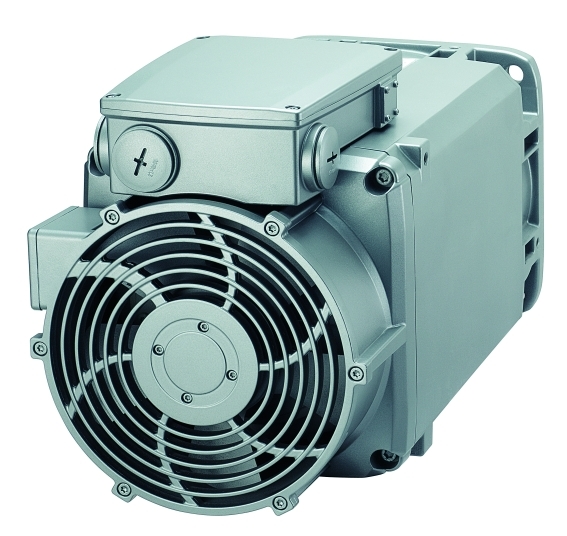Making the best even better — that was the challenge for the new line of Siemens motors. Since 1996, the 1PH7 series has rendered successful service as the primary drive for belt-driven and coupled tooling machines — around 270,000 of these units are cooled by fans from Mulfingen. At the end of 2009, the Siemens industry division presented the successor, the new 1PH8 line. These advanced motors offer benefits that will inspire the user: excellent refinement and vibrations are the basis for greater precision, allowing better quality workpieces to be produced. The motor line is now more dynamic and has a broad performance spectrum, a high speed range and it employs a modular principle that makes it ideal as the standard drive for conventional tooling machine spindles. The motors can also be used in production machines such as textile machines, hoists, crane installations and test stands.

One of the modular elements for the 1PH8 is the forced ventilation unit supplied by ebm-papst up to shaft height 160. Experience with the predecessor version showed that precision was important when configuring the operating points for the new line of motors and that the design had to be adapted to accommodate the new motor generation. The result is a completely new forced ventilation unit. The air performance characteristic is precisely configured for the new motors and the units also work more quietly. Motor layout, impeller design and blade setting have been optimised and the die-cast aluminium housings have been configured to suit the new motor design. Here, ebm-papst engineers cooperated closely with the industrial designers at Siemens.
The forced ventilation units had to satisfy the design specifications of the lead design agency at Siemens. Together with the motor and more compact terminal box they were to be treated as one unit from a single casting. The electronic exchange of 3D design models made this harmonisation possible and led, for example, to curved struts on the guard grille, which visualises the dynamics of the drive.
 Technically, the forced ventilation unit inspires not only with its optimal air performance characteristics and minimal noise emissions, but also with individual options. Apart from the standard flow direction “blowing over the motor”, a version “extraction over the motor” is also available. Plant engineers use this version as a variable drive for lathes in ultra-precise machining centres because extraction means that tolerance deviations caused by the thermal influence of the air flow are ruled out. In addition, vibration-free versions, filter and pipe connections for extremely dusty working environments are in the process of implementation. And the unit is certainly durable: the housing made of stable die-cast aluminium and fan vanes made of sheet metal ensure a mean service life of at least 40,000 operating hours.
Technically, the forced ventilation unit inspires not only with its optimal air performance characteristics and minimal noise emissions, but also with individual options. Apart from the standard flow direction “blowing over the motor”, a version “extraction over the motor” is also available. Plant engineers use this version as a variable drive for lathes in ultra-precise machining centres because extraction means that tolerance deviations caused by the thermal influence of the air flow are ruled out. In addition, vibration-free versions, filter and pipe connections for extremely dusty working environments are in the process of implementation. And the unit is certainly durable: the housing made of stable die-cast aluminium and fan vanes made of sheet metal ensure a mean service life of at least 40,000 operating hours.

Leave a comment